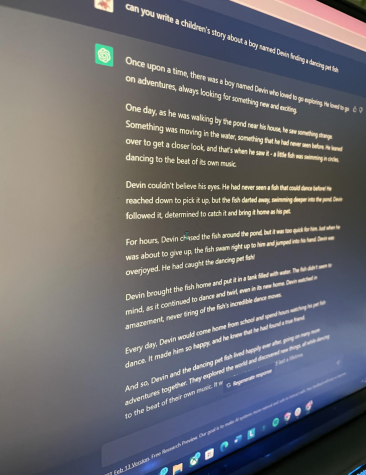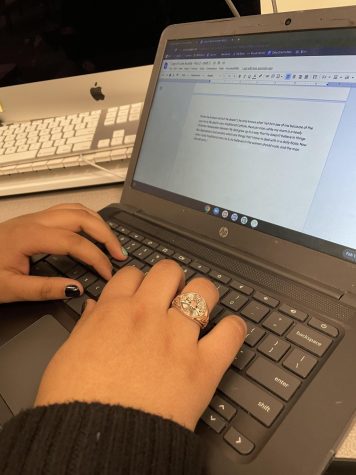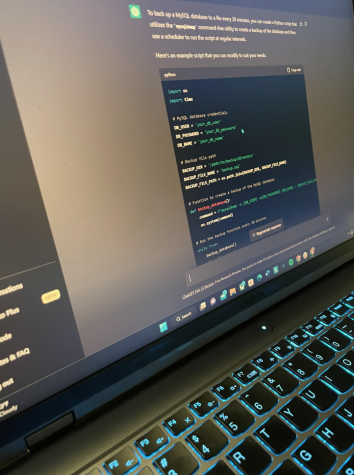DVC’s Approach to Confronting ChatGPT

Recently, the use of AI has been on the rise, with new abilities which can range from producing pieces of digital art to full on academic papers. This includes ChatGPT, a chatbot type AI released by OpenAI which has the capacity to relay human-like responses to it’s users.
Due to ChatGPT’s diverse potential to create essays and even code, this AI has been blocked throughout all Da Vinci devices. However, it is now making a comeback, with plans to become unblocked. 12th grade Computer Science pathway teacher, Eric Marintsch, explained why ChatGPT will not face the wrath of the Da Vinci firewall in the future.
“It feels inevitable that and more and more of these tools are going to become a part of our everyday life. So instead of spending a bunch of resources trying to figure out how we can block students from using it, we can show students how to use it,” he said.
After all, technology is ever-evolving, so accepting change and adapting to it is more efficient in the long run. ChatGPT could also provide certain benefits, such as enhancing the student learning experience, which Marintsch expressed.
“We were using this new tool, learning how to use it and as part of the process, they were drawing a picture of Spider Man using code, so I threw it into ChatGPT… So [we were using]it to generate topics and to teach concepts,” said Marintsch.

If students are taught how to use ChatGPT as a learning aid, it could be a powerful resource. However, there are still concerns about student misusage, as student plagiarism will become even harder to spot. 12th grade English teacher, Ajane Dodson, elaborated on the concerns for plagiarism.
“My concern is that students might use it inappropriately to help them with writing papers and things like that. I don’t know how adept it is at writing English papers, but I’m concerned about that problem,” Dodson revealed.
That is an issue that can be, as ChatGPT is able to replicate human work through its algorithm. Even without AI, plagiarism is still rampant, which 12th grade computer science student, Mathew Acosta, pointed out.
“I know that [plagarism is] common knowledge and you learn that in like middle school. But people still keep doing it,” Acosta said. “I feel like [ChatGPT] will just reinforce that idea of plagiarism.”
With these issues at hand, there are still solutions that can mitigate academic dishonesty. After all, adapting to the situation is crucial to not becoming hindered in the long run. Marintsch offered some helpful solutions that teachers should consider.

“So, more unplugged assessments, and more assessments that involve discussion, more evidence of multiple drafts, but even that, you can use [ChatGPT] to do that as well. So I think short term, we’re changing our curriculum,” he revealed.
Although teachers may have to change the way they assess certain skills because of ChatGPT and possibly other AI, it can serve as an invaluable educational tool, even outside of school. Vanessa Perez, a 10th grade student who is a part of the Data Science directorate for the Da Vinci robotics team, Team 4201, articulated how ChatGPT is a useful resource.
“Overall it’s pretty helpful. It’s also kind of funny. We use it for robotics when we’re stuck with writing our code for our [scouting] apps sometimes and we also make it generate funny stories for fun,” said Perez.
Given the benefits, sometimes the risk is well worth the investment at the end. Marintsch summarized this point pretty well.
“As a teaching staff, we decided that we weren’t going to spend our energy trying to identify plagiarism so much and more helping to show students ways that the tools can be helpful and finding ways to assess them to really see if they learned it or not,” he said. “But I mean, this is just the beginning.”